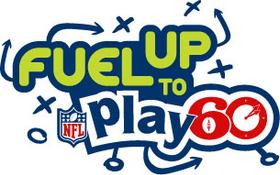Top Rankings
Nc Virtual Academy School District ranks among the top 20% of public school district in North Carolina for:
Category
Attribute
Diversity
Most diverse schools (Top 1%)
For the 2025 school year, there is 1 public school serving 2,959 students in Nc Virtual Academy School District. This district's average testing ranking is 4/10, which is in the bottom 50% of public schools in North Carolina.
Public School in Nc Virtual Academy School District have an average math proficiency score of 34% (versus the North Carolina public school average of 51%), and reading proficiency score of 49% (versus the 50% statewide average).
Minority enrollment is 57% of the student body (majority Black), which is equal to the North Carolina public school average of 57% (majority Black and Hispanic).
Overview
This School District
This State (NC)
# Schools
1 School
2,764 Schools
# Students
2,959 Students
1,547,014 Students
# Teachers
129 Teachers
100,085 Teachers
Student : Teacher Ratio
23:1
23:1
Student By Grade
District Rank
Nc Virtual Academy School District, which is ranked within the bottom 50% of all 320 school districts in North Carolina (based off of combined math and reading proficiency testing data) for the 2021-2022 school year.
The school district's graduation rate of 80-84% has increased from 60-69% over five school years.
Overall District Rank
#215 out of 325 school districts
(Bottom 50%)
(Bottom 50%)
Math Test Scores (% Proficient)
34%
51%
Reading/Language Arts Test Scores (% Proficient)
49%
50%
Science Test Scores (% Proficient)
63%
63%
Graduation Rate
80-84%
86%
Students by Ethnicity:
Diversity Score
0.70
0.71
% American Indian
2%
1%
% Asian
1%
4%
% Hispanic
14%
21%
% Black
30%
25%
% White
43%
43%
% Hawaiian
n/a
n/a
% Two or more races
10%
6%
All Ethnic Groups
District Revenue and Spending
The revenue/student of $8,075 in this school district is less than the state median of $11,187. The school district revenue/student has stayed relatively flat over four school years.
The school district's spending/student of $7,380 is less than the state median of $11,612. The school district spending/student has stayed relatively flat over four school years.
Total Revenue
$24 MM
$17,307 MM
Spending
$22 MM
$17,964 MM
Revenue / Student
$8,075
$11,187
Spending / Student
$7,380
$11,612
Best Nc Virtual Academy School District Public Schools (2025)
School
(Math and Reading Proficiency)
(Math and Reading Proficiency)
Location
Grades
Students
Rank: #11.
Nc Virtual Academy
Charter School
(Math: 34% | Reading: 49%)
Rank:
Rank:
4/
Bottom 50%10
4220 Nc Highway 55, Suite 130
Durham, NC 27713
(919) 346-0121
Durham, NC 27713
(919) 346-0121
Grades: K-12
| 2,959 students
Frequently Asked Questions
How many schools belong to Nc Virtual Academy School District?
Nc Virtual Academy School District manages 1 public schools serving 2,959 students.
What is the rank of Nc Virtual Academy School District?
Nc Virtual Academy School District is ranked #214 out of 320 school districts in North Carolina (bottom 50%) based off of combined math and reading proficiency testing data for the 2021-2022 school year. This district ranks in the top 20% of North Carolina school districts for: Most diverse schools (Top 1%)
What is the racial composition of students in Nc Virtual Academy School District?
43% of Nc Virtual Academy School District students are White, 30% of students are Black, 14% of students are Hispanic, 10% of students are Two or more races, 2% of students are American Indian, and 1% of students are Asian.
What is the student/teacher ratio of Nc Virtual Academy School District?
Nc Virtual Academy School District has a student/teacher ratio of 23:1, which is higher than the North Carolina state average of 15:1.
What is Nc Virtual Academy School District's spending/student ratio?
The school district's spending/student of $7,380 is less than the state median of $11,612. The school district spending/student has stayed relatively flat over four school years.
Recent Articles

Texas Schools: The Voucher/School Choice Debate
The issue of school choice and a voucher system is currently being revisited in Houston and across the state of Texas, with strong opinions on both sides of the debate.

Fuel Up to Play 60 Focuses on Integrating Fitness and Wellness into the School Day
What if NFL players came to your school? With the Fuel Up to Play 60 program, sponsored by the National Dairy Council and the NFL, nutrition and exercise are promoted during the school day. NFL players participate in the program by coming to schools and talking to students about fitness. Learn more about the program and some of the schools that are implementing it.

What Parents Need to Know About Lunch Shaming
Students all over the nation go hungry every day not because their schools don’t offer lunch, but because they refuse them to children with outstanding debts. Read on to learn about the horror that is lunch shaming and what can be done about it.





